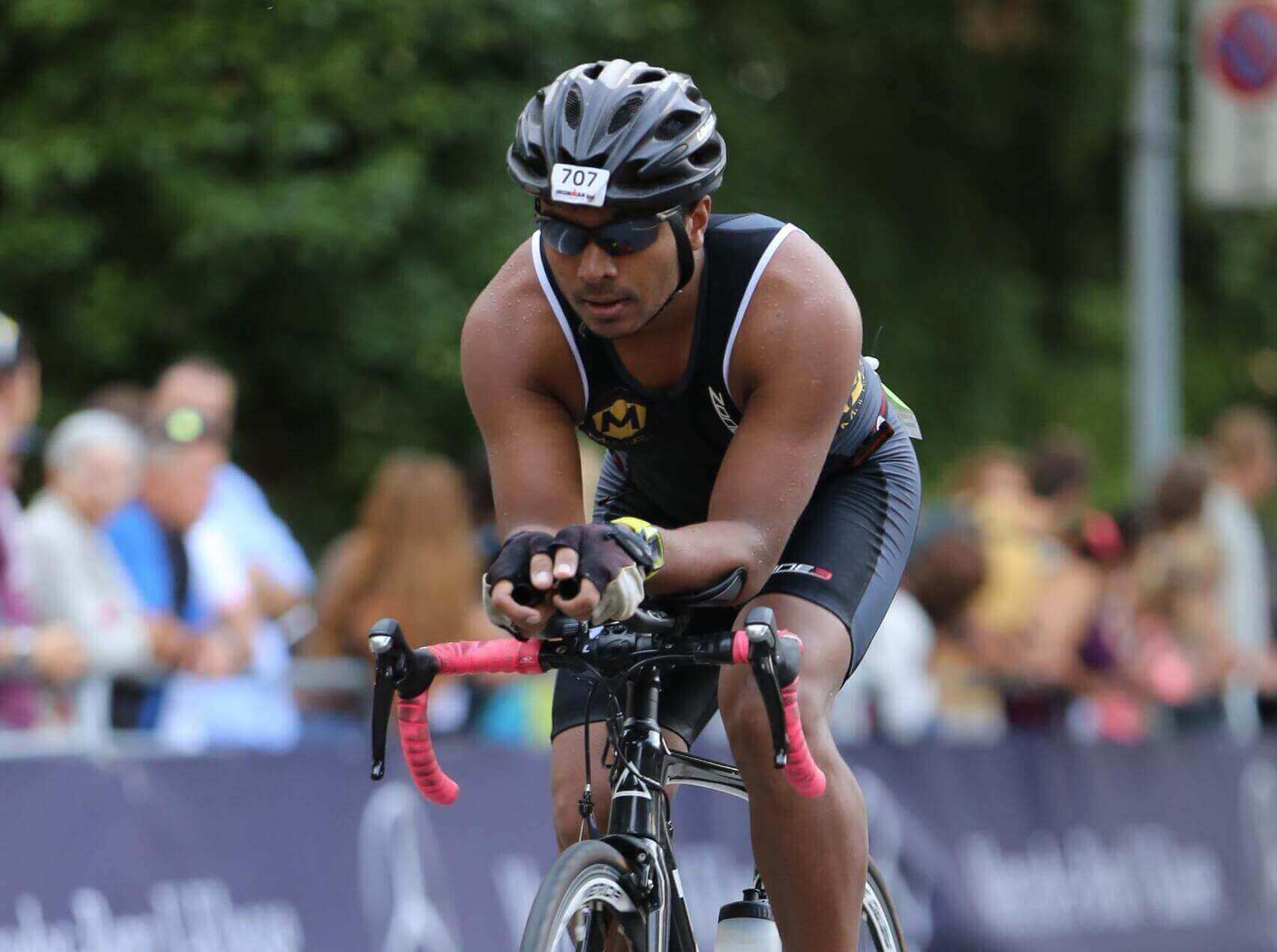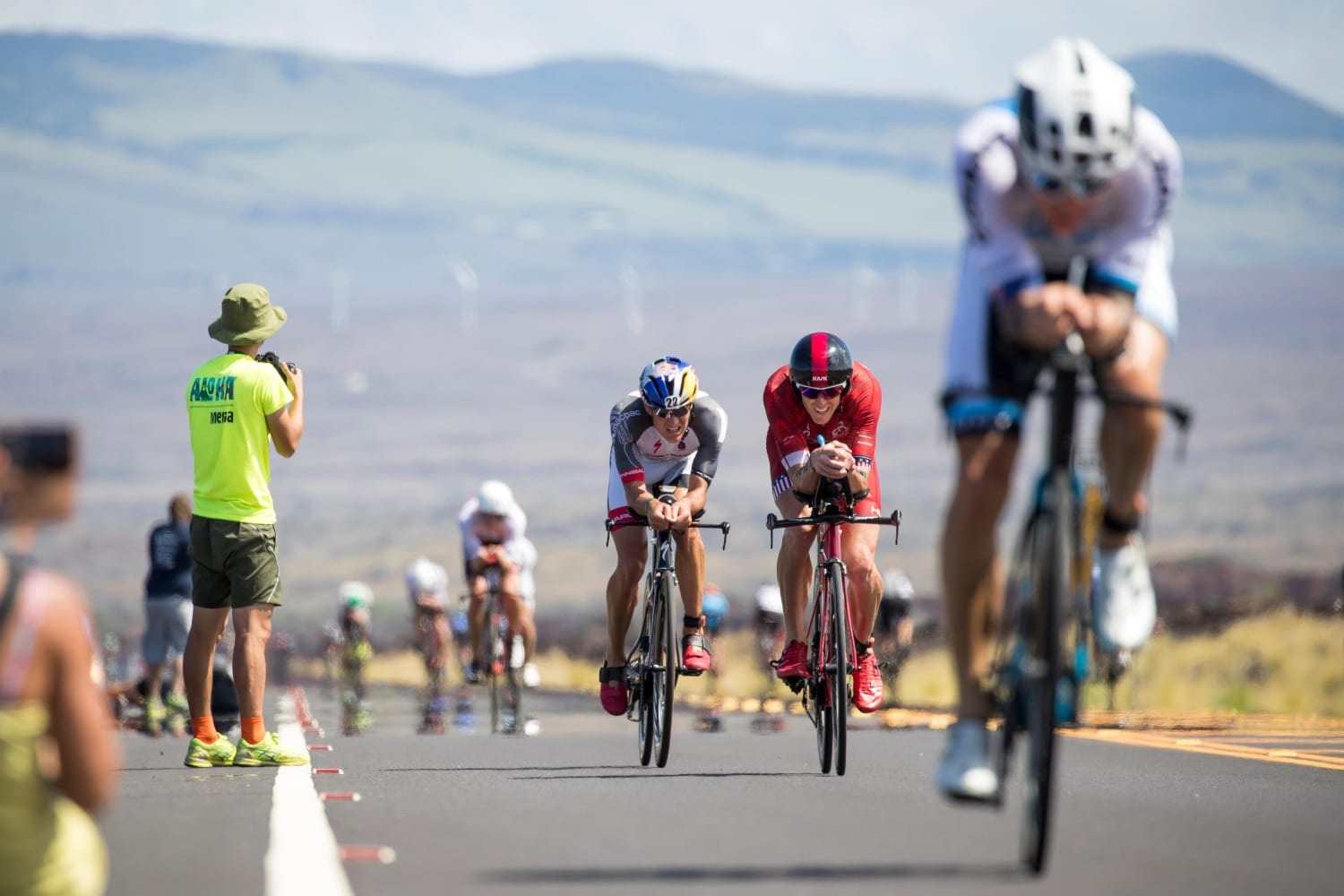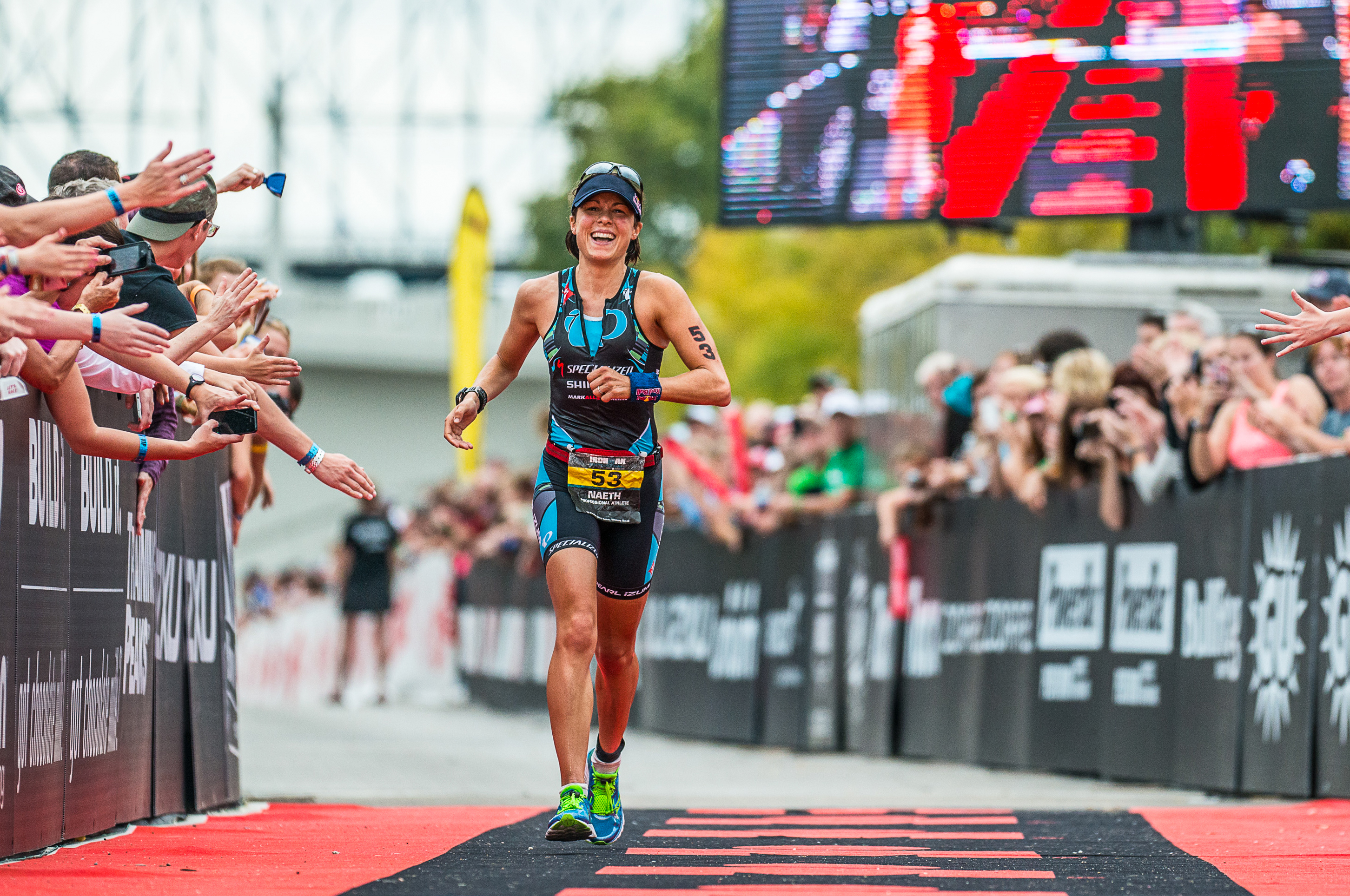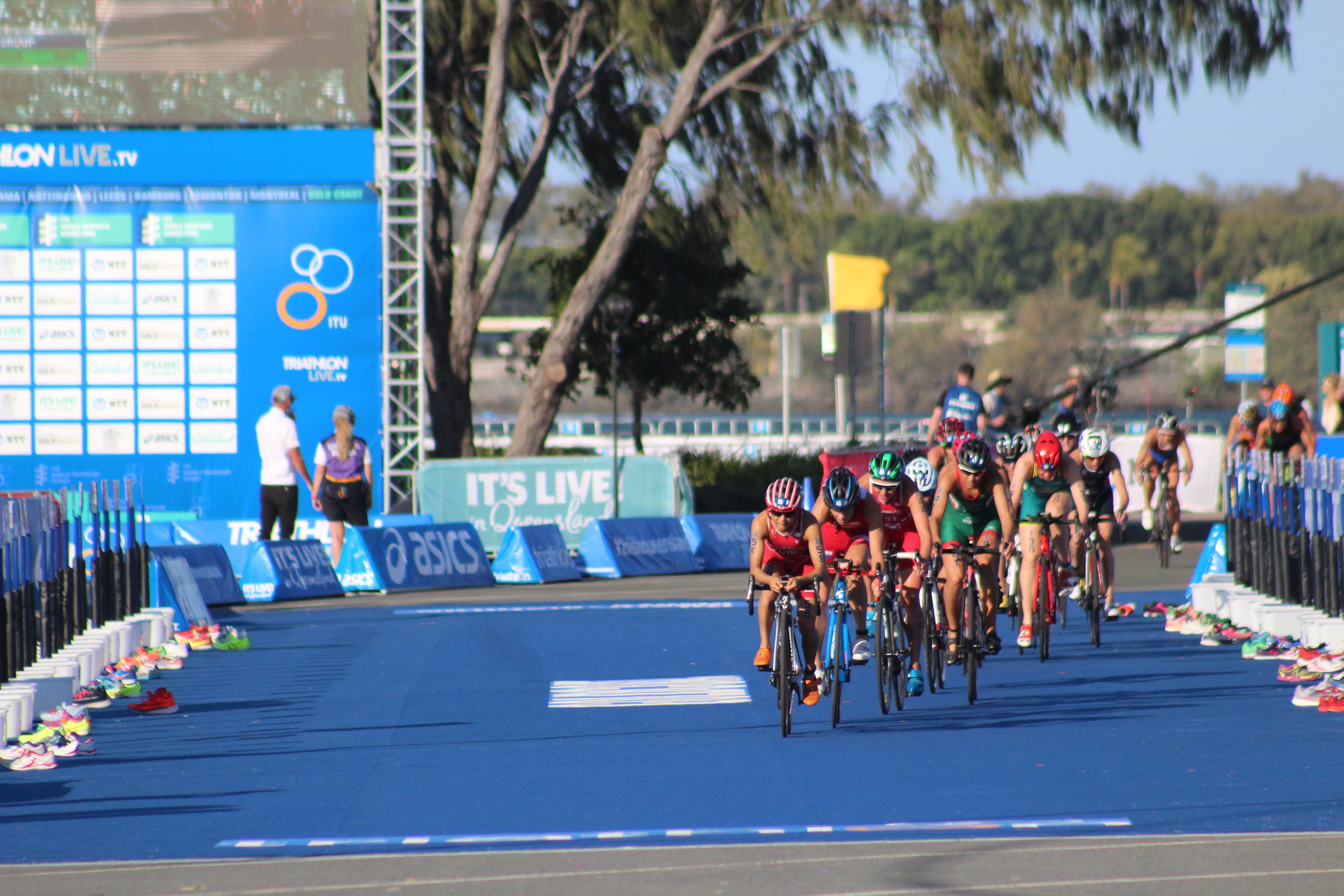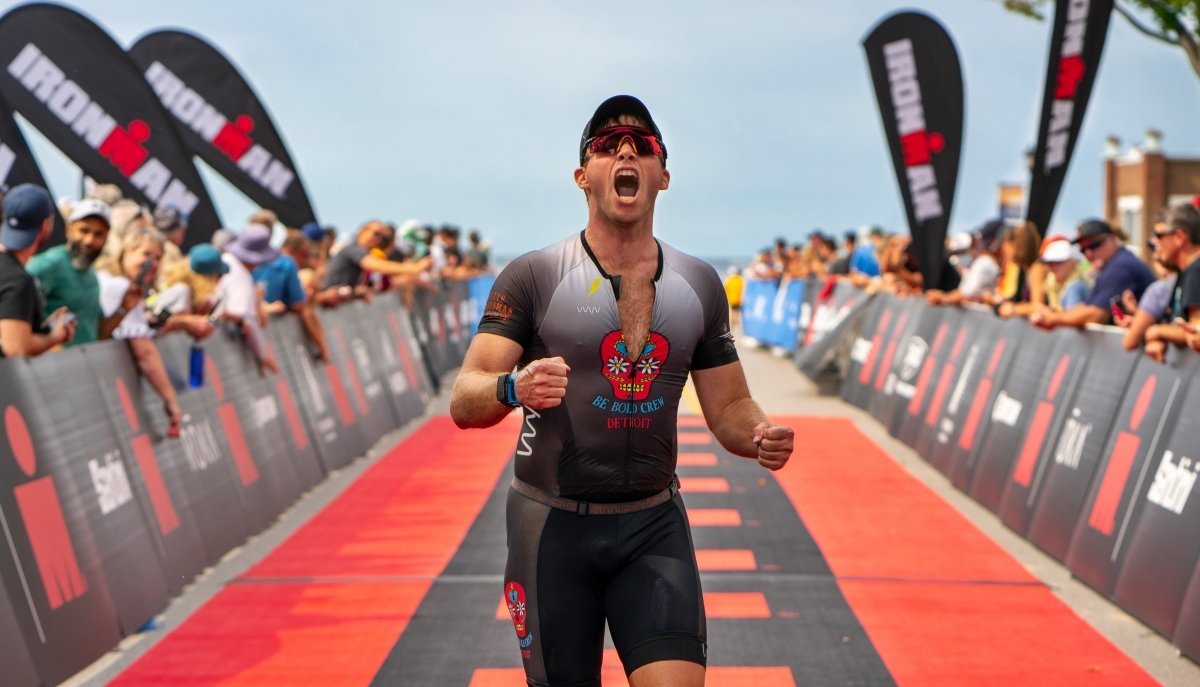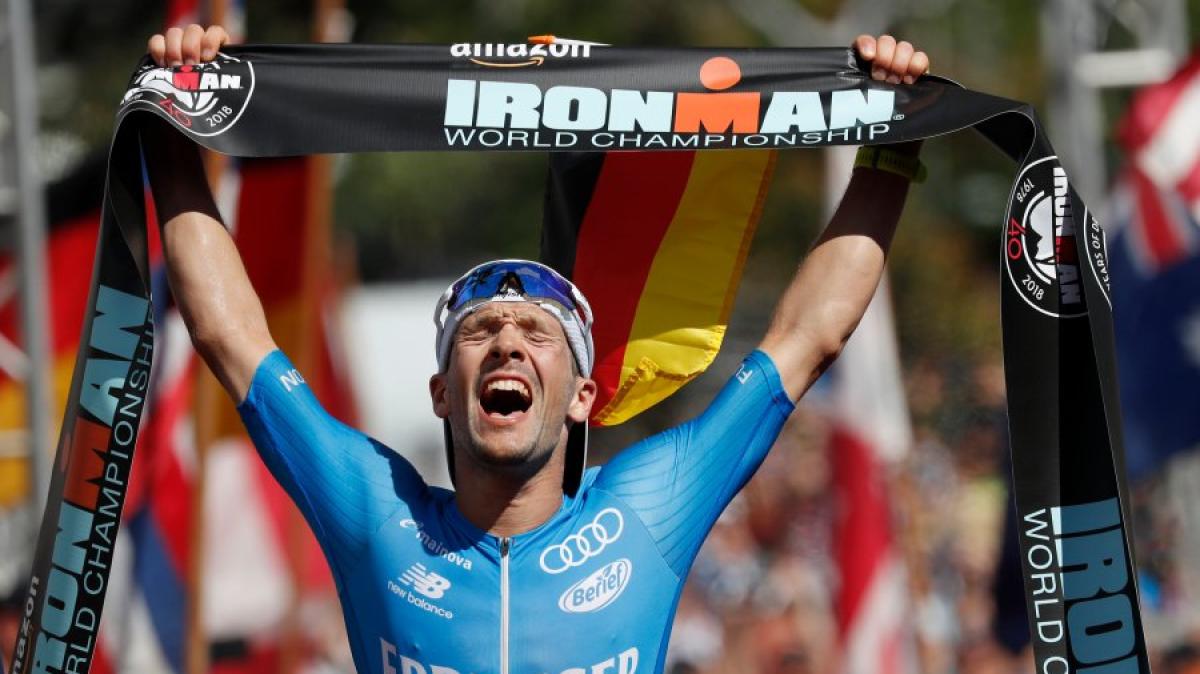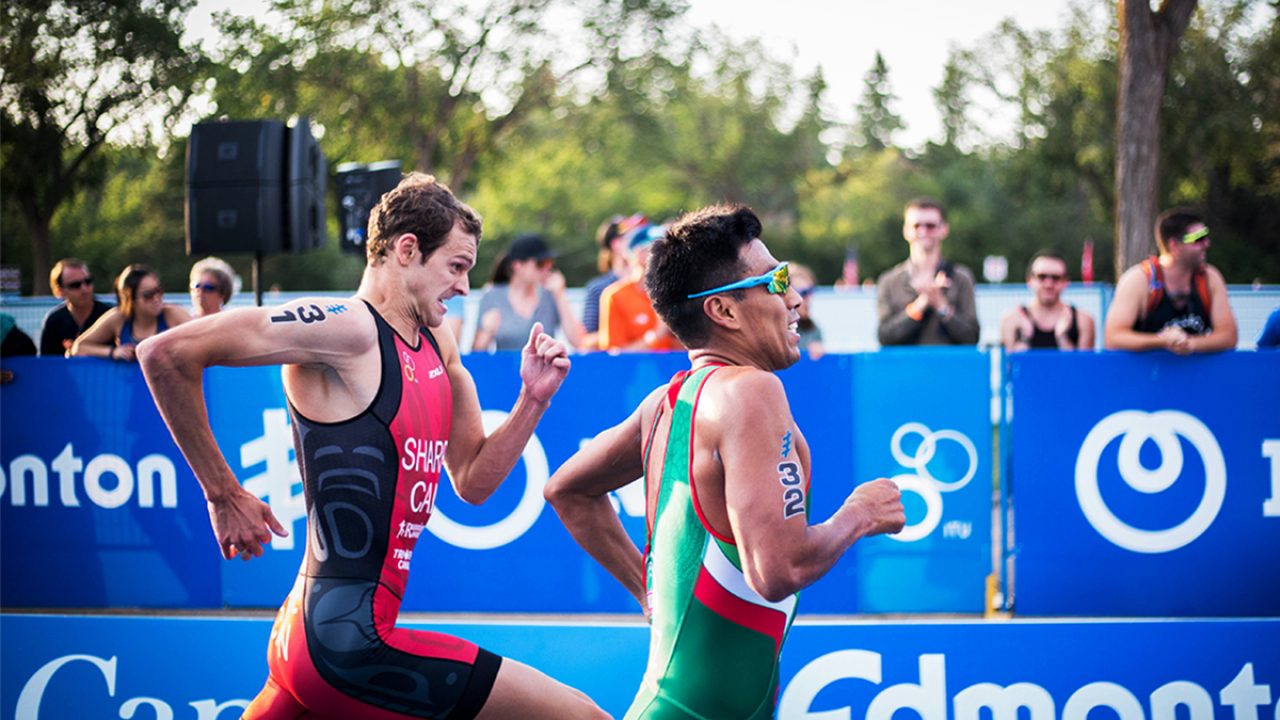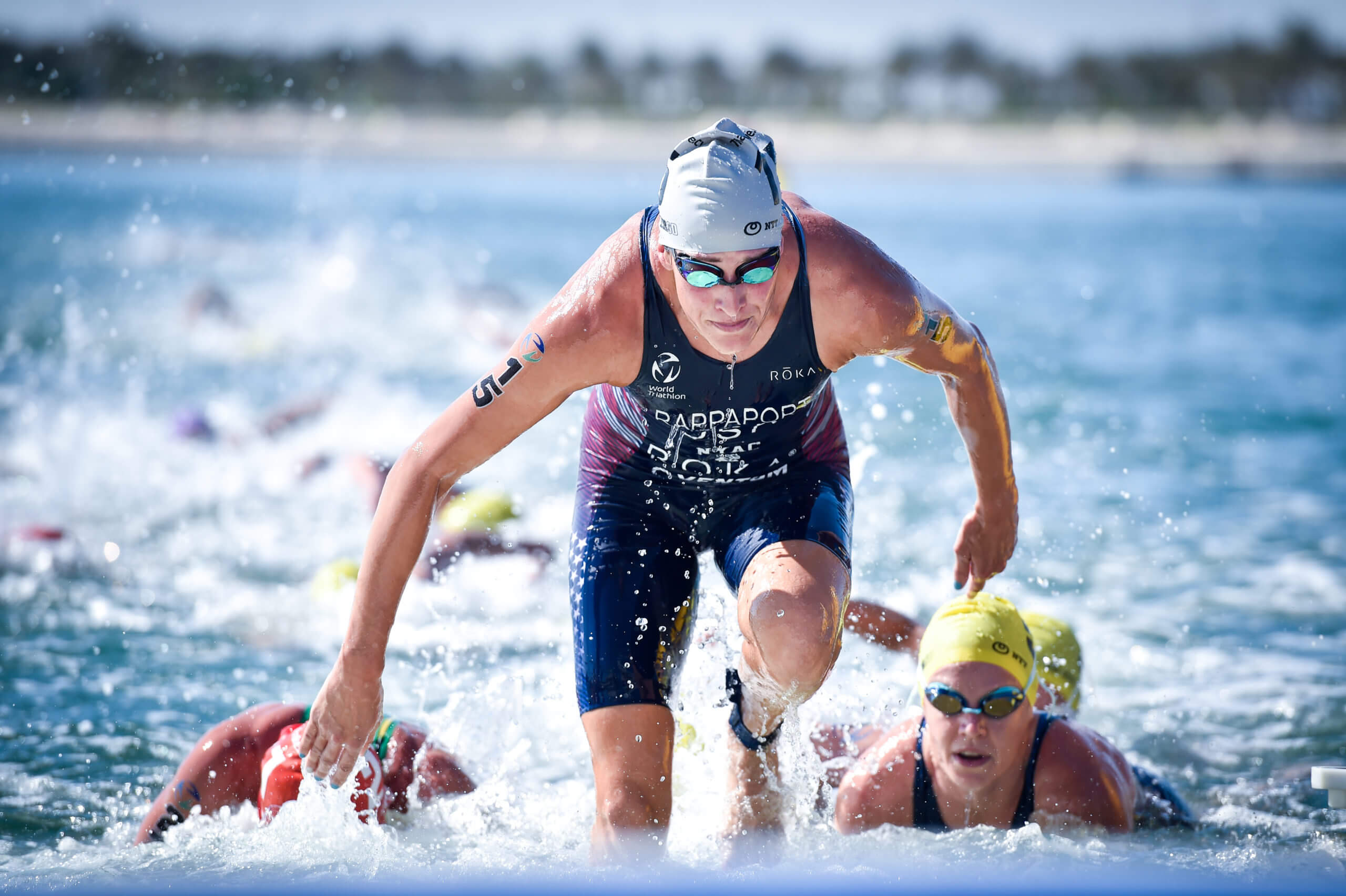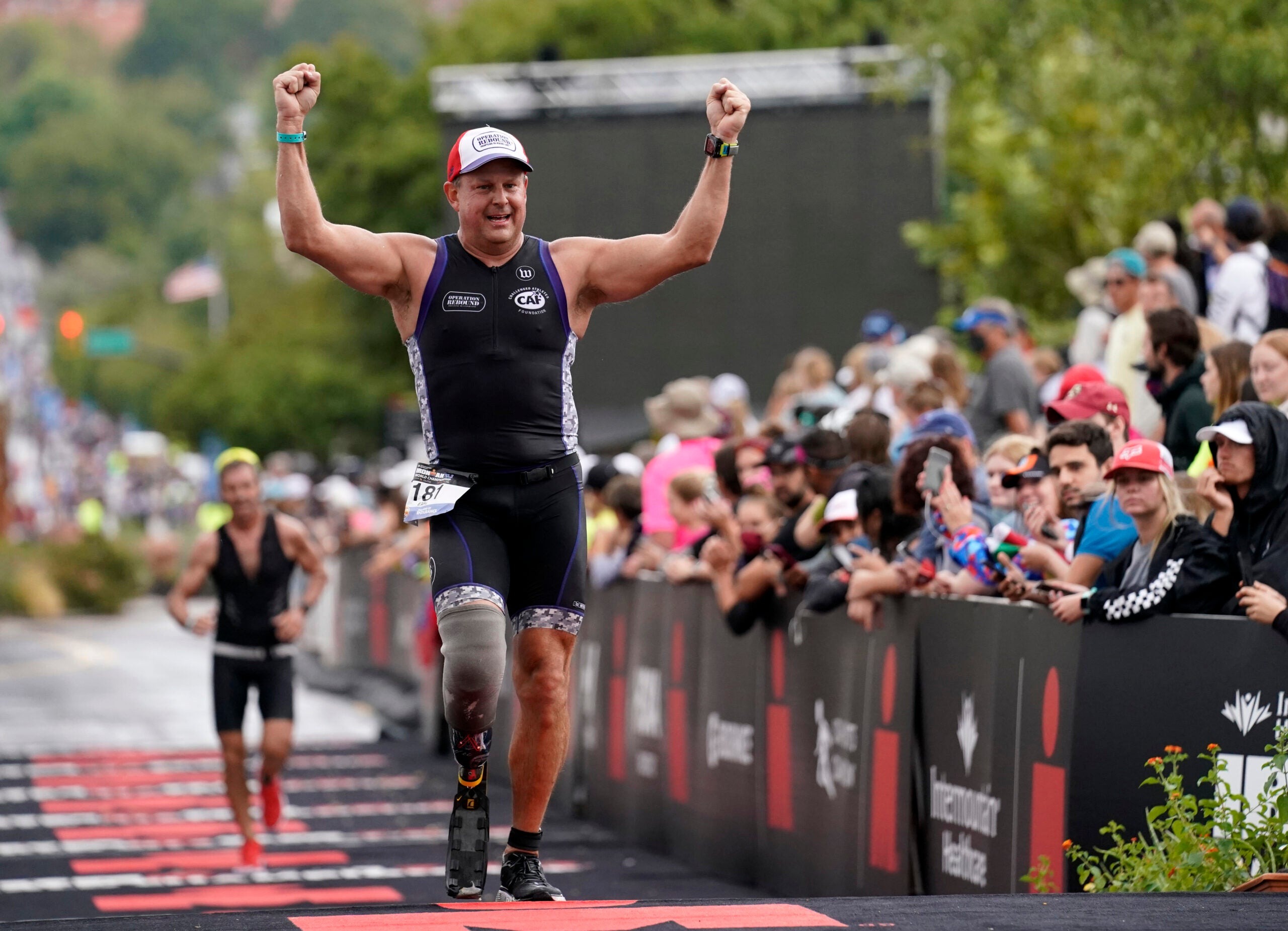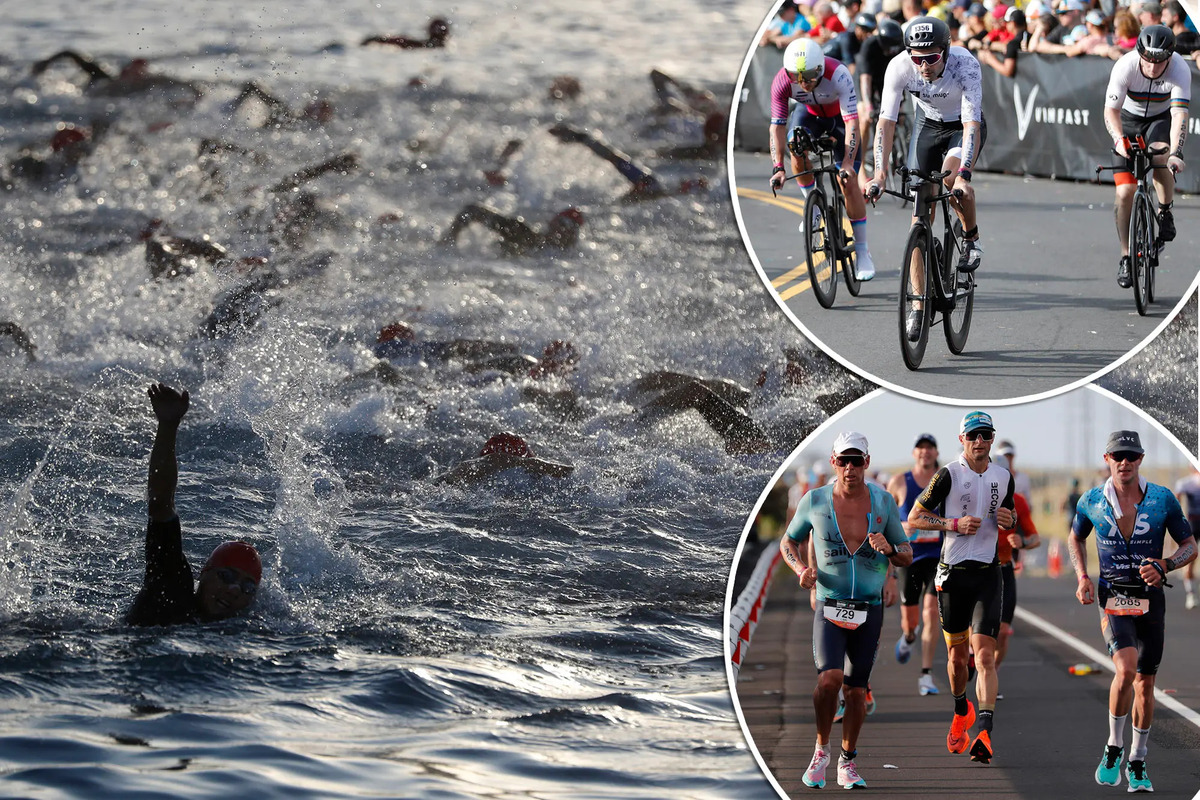

Featured
What Is An Ironman Marathon
Modified: January 2, 2024
Discover what an Ironman Marathon is and how it puts athletes to the ultimate test. Explore the featured race that pushes competitors to their limits.
Introduction
The Ironman marathon is a grueling endurance race that pushes athletes to their limit. It combines swimming, cycling, and running into one challenging event, testing both physical abilities and mental strength. It is considered one of the ultimate tests of human endurance and has gained popularity worldwide.
The Ironman marathon originated from a challenge between friends to determine who was the fittest: a swimmer, a biker, or a runner. This gave birth to the concept of a triathlon, which eventually evolved into the Ironman race we know today. Athletes participating in an Ironman marathon aim to complete a 2.4-mile swim, 112-mile bike ride, and a full marathon, which is 26.2 miles, all within a specific time limit.
The event demands months, if not years, of dedicated training and preparation. Proper nutrition planning, physical preparation, and mental conditioning are essential for success. The Ironman marathon is not just a race; it is a personal journey that challenges athletes to overcome their limitations and achieve their full potential.
In this article, we will explore the history of the Ironman marathon, the training required to compete in it, the importance of nutrition and mental preparation, and provide tips to help athletes complete this incredible feat of endurance. Whether you are an aspiring Ironman or simply curious about this iconic event, this article will provide valuable insights into what it takes to complete an Ironman marathon.
Definition of Ironman
The Ironman is an endurance race that combines three disciplines: swimming, cycling, and running. It is a test of physical fitness, mental strength, and perseverance. The race is known for its grueling distances, consisting of a 2.4-mile swim, followed by a 112-mile bike ride, and finishing with a full marathon, which is a 26.2-mile run.
An Ironman race is not just a regular triathlon; it is a brand and a specific event organized by the World Triathlon Corporation (WTC). Only events licensed and sanctioned by the WTC can use the term “Ironman.” This branding has significantly contributed to the prestige and recognition of the race around the world.
The Ironman race is a true test of an athlete’s endurance, requiring months of dedicated training and preparation. Participants must have the ability to swim long distances in open water, possess strong cycling skills to cover the challenging bike course, and have the mental and physical stamina to tackle the grueling marathon at the end.
Completion of an Ironman race is a significant accomplishment, often regarded as the ultimate goal for any triathlete. The event is not just about finishing; it is about overcoming obstacles, pushing boundaries, and achieving personal growth. It symbolizes the triumph of the human spirit and the ability to conquer seemingly insurmountable challenges.
Ironman races are held in various locations worldwide, attracting both professional and amateur athletes from all walks of life. The race has become a community, fostering camaraderie and support among participants. The Ironman mantra, “Anything is possible,” resonates with not only those who have completed the race but also with anyone pursuing their goals and dreams.
In the next sections, we will dive deeper into the history of the Ironman marathon and explore the journey of training, nutrition, and mental preparation required to participate in this extraordinary event.
Ironman Triathlon Distances
The Ironman triathlon consists of three challenging disciplines: swimming, cycling, and running. Each discipline has specific distances that athletes must complete during the race. These distances are standardized across all Ironman events and remain consistent throughout the years.
The first leg of the Ironman triathlon is the swim. Participants must complete a 2.4-mile open water swim, typically in a lake or ocean. This portion of the race is known for its mass start, where hundreds or even thousands of athletes enter the water simultaneously. Athletes must navigate the course, often marked by buoys, and complete the swim within a specific time limit.
After completing the swim, athletes transition to the bike phase. The cycling portion of the Ironman triathlon is a grueling 112-mile ride. The course is typically challenging, featuring hills, descents, and varying terrain. Athletes must possess strong cycling skills and endurance to conquer this lengthy distance. The bike phase is a test of physical strength and mental fortitude, requiring athletes to push through fatigue and maintain a steady pace.
Finally, after finishing the bike ride, athletes transition to the run phase, which is a full marathon. The marathon distance for the Ironman triathlon is 26.2 miles, and athletes must complete it within the given time limit. The run is often considered the most mentally and physically demanding part of the race. Athletes must battle fatigue, muscle soreness, and mental exhaustion to complete the marathon and cross the finish line.
Combined, the swimming, cycling, and running distances in the Ironman triathlon total 140.6 miles. This tremendous feat of endurance pushes athletes to their limits and requires months of preparation to build the necessary strength and stamina.
The Ironman triathlon distances are standardized to ensure consistency across all races and provide a fair and equivalent challenge for all participants. Whether a participant is competing in the iconic Ironman World Championship in Kona, Hawaii, or any other Ironman event around the world, the distances remain the same.
In the following sections, we will explore the history of the Ironman marathon and shed light on the rigorous training, nutrition, and mental preparation required to successfully complete an Ironman race.
History of Ironman Marathon
The history of the Ironman marathon dates back to 1978, when a small group of athletes in Hawaii came up with a challenge to determine who among them was the fittest: a swimmer, a biker, or a runner. The result was the birth of the Ironman triathlon, a race that would test participants’ endurance and push the limits of human capability.
The inaugural Ironman race took place on February 18, 1978, on the island of Oahu, Hawaii. There were a total of 15 participants, and the race consisted of a 2.4-mile swim, a 112-mile bike ride, and a marathon run. Gordon Haller, a naval officer, became the first Ironman champion, completing the race in 11 hours, 46 minutes, and 58 seconds.
The following year, the race was moved to the island of Hawaii, specifically to the town of Kailua-Kona, where it has been held ever since. The Ironman World Championship in Kona has become the pinnacle of the sport, attracting top athletes from around the globe and gaining worldwide recognition.
Over the years, the Ironman race grew in popularity, with more athletes seeking the ultimate challenge. In 1981, the Ironman triathlon distance was officially set at 140.6 miles, which has remained the standard ever since. The race continued to gain attention and expand, resulting in the creation of additional Ironman events across the globe.
In 1990, the World Triathlon Corporation (WTC) acquired the rights to the Ironman brand and began organizing and sanctioning races under the Ironman name. This acquisition further elevated the prestige and recognition of the Ironman marathon, solidifying its status as the ultimate endurance race.
Throughout its history, the Ironman marathon has witnessed incredible performances and inspiring stories. From Mark Allen’s legendary six Ironman World Championship wins to Chrissie Wellington’s dominance in the women’s division, the event has showcased the incredible resilience and determination of its participants.
Today, the Ironman marathon has become a global phenomenon, with races held in various countries and continents. It continues to captivate the imagination of both professional athletes and amateur enthusiasts, serving as a testament to the human spirit’s ability to overcome challenges and push boundaries.
In the next sections, we will delve into the training, nutrition, and mental preparation necessary to undertake this demanding race, providing valuable insights into what it takes to endure and complete an Ironman marathon.
Training for an Ironman Marathon
Training for an Ironman marathon requires a well-structured and comprehensive plan to build the necessary endurance, strength, and mental resilience. The training process typically spans several months and involves a combination of swimming, cycling, running, and strength training.
When it comes to training for the swim portion of the race, it is crucial to practice open water swimming as much as possible. This helps athletes become accustomed to swimming in different conditions, such as waves, currents, and crowded environments. Additionally, incorporating interval training and drills into swim workouts can improve speed and stamina.
Cycling plays a significant role in an Ironman marathon, and athletes must spend a considerable amount of time on the bike. Long endurance rides, hill repeats, and interval training are essential to build both strength and endurance. It is also important to practice bike-to-run transitions, known as brick workouts, to simulate the fatigue that comes from cycling and prepare the body for the run phase.
The most critical aspect of Ironman marathon training is the running component. Athletes need to gradually increase their mileage, incorporating long runs, tempo runs, speed work, and practice running on tired legs through brick workouts. Ensuring proper running form, wearing appropriate footwear, and listening to the body to avoid injuries are essential during the training process.
In addition to the three main disciplines, strength training is vital for injury prevention and overall performance enhancement. Incorporating exercises that target muscles used in swimming, cycling, and running, as well as core strengthening exercises, can improve stability and power. It is important to ensure a balance between strength training and recovery to prevent muscle fatigue and promote optimal performance.
Consistency is key in Ironman marathon training. Creating a training plan that gradually increases volume and intensity, while allowing for proper recovery and rest days, is essential. Monitoring progress, tracking workouts, and adjusting the plan as needed to address weaknesses or imbalances are crucial for success.
Mental preparation is equally important in an Ironman marathon. Athletes must develop mental strategies to stay focused, motivated, and resilient during the race. Visualization techniques, positive self-talk, and cultivating a strong support network can aid in overcoming challenges and pushing through the tough moments.
In the next sections, we will explore the importance of nutrition and proper fueling during an Ironman marathon, as well as delve into the mental preparation required to tackle this extraordinary endurance challenge.
Nutrition for an Ironman Marathon
Nutrition plays a crucial role in the success of an Ironman marathon. Proper fueling before, during, and after the race is essential to maintain energy levels, enhance performance, and promote recovery. The intense physical demands of the race require a strategic approach to nutrition to ensure optimal performance on race day.
Before the race, it is important to focus on consuming a balanced diet that includes carbohydrates, proteins, and healthy fats. Carbohydrates are particularly important as they provide the primary source of fuel for endurance activities. Loading up on complex carbohydrates a few days before the race can help replenish glycogen stores and ensure the body has sufficient energy for the race.
During the race, fueling becomes a critical aspect. Athletes need to consume a combination of carbohydrates, electrolytes, and fluids to maintain energy levels and prevent dehydration. This typically involves consuming gels, energy bars, electrolyte drinks, and water at regular intervals throughout the race. It is important to practice fueling strategies during training to understand what works best for individual needs and preferences.
Recovery nutrition is vital after completing the race. Consuming a mixture of carbohydrates and proteins within the first 30 minutes to an hour after finishing can aid in muscle glycogen replenishment and promote repair and recovery. Including a variety of nutrient-rich foods such as fruits, vegetables, lean proteins, and whole grains in post-race meals is important to support the body’s healing process.
Hydration is another crucial aspect of nutrition for an Ironman marathon. Staying adequately hydrated throughout the race helps maintain optimal performance and prevents issues such as muscle cramps and heat exhaustion. Athletes must drink fluids consistently during the race and pay attention to their body’s thirst signals to ensure proper hydration.
It is important for athletes to work with a registered dietitian or sports nutritionist to develop a personalized nutrition plan for the Ironman marathon. This plan takes into account individual preferences, dietary restrictions, and specific training needs. Regular monitoring of nutritional intake, adjustments as needed, and practicing nutrition strategies during training are key to fine-tuning fueling techniques for optimal race performance.
In the next section, we will explore the mental preparation required for an Ironman marathon and provide tips to help athletes conquer the mental challenges that arise during the race.
Mental Preparation for an Ironman Marathon
Mental preparation is a crucial aspect of successfully completing an Ironman marathon. The race pushes athletes to their physical and mental limits, and having a strong mental game can make all the difference in overcoming the challenges that arise during the race.
One of the key elements of mental preparation is visualization. Athletes can mentally rehearse the race, visualizing themselves swimming smoothly, cycling with strength, and running with determination. Visualizing a successful race and crossing the finish line can instill confidence and create a sense of familiarity, helping athletes stay focused and motivated during the race.
Developing a positive mindset is also essential. Positive self-talk can be a powerful tool to overcome self-doubt and negative thoughts. Reminding oneself of past accomplishments, focusing on strengths, and embracing a can-do attitude can help athletes maintain a positive outlook and push through the tough moments during the race.
Managing race-day nerves is another aspect of mental preparation. It is common to experience pre-race jitters and anxiety, but having coping strategies in place can help calm the mind. This can involve deep breathing exercises, meditation, or engaging in activities that promote relaxation and focus, such as listening to calming music or visualizing calming scenes.
Having a support network is also beneficial for mental preparation. Surrounding oneself with positive and supportive individuals, whether it’s family, friends, or fellow athletes, can provide encouragement and motivation throughout the race. Engaging in group training sessions, joining a triathlon club, or participating in online communities for Ironman athletes can create a sense of belonging and camaraderie.
Accepting that challenges and setbacks may arise during the race is also part of mental preparation. The Ironman marathon is a demanding and unpredictable event, and athletes must be mentally prepared to face unexpected situations. Having the mindset to adapt and problem-solve on the go can help athletes navigate obstacles and stay focused on their goals.
Acknowledging the significance of the achievement is crucial. Completing an Ironman marathon is an extraordinary accomplishment, and athletes should take pride in their training, preparation, and dedication. Celebrating milestones along the way, focusing on personal growth, and appreciating the journey can contribute to a positive mindset and enhance the overall race experience.
In the next section, we will provide valuable tips to help athletes complete an Ironman marathon, covering various aspects of the race and offering practical advice to maximize success.
Tips for Completing an Ironman Marathon
Completing an Ironman marathon is a monumental achievement that requires months of dedicated training, mental resilience, and strategic race-day execution. To help athletes maximize their chances of success, here are some valuable tips for completing an Ironman marathon:
- Start with a well-structured training plan: A solid training plan is essential for building endurance, increasing mileage gradually, and incorporating the right mix of workouts. Working with a coach or following a reputable training program can provide guidance and ensure that training is balanced and effective.
- Practice race-day nutrition: Fueling properly during the race is critical to maintain energy levels. Practice your nutrition strategy during training to determine what foods and drinks work best for you and when to consume them. Remember to hydrate consistently throughout the race.
- Master transition techniques: Efficient transitions between swim to bike and bike to run can save precious minutes during the race. Practice transitions during training to streamline the process, including removing wetsuits quickly, organizing gear, and smoothly transitioning between disciplines.
- Pace yourself wisely: It’s crucial to start the race at a sustainable pace to avoid burning out early. Remember that the marathon comes after swimming and cycling, so conserving energy in the beginning is key. Listen to your body and adjust your effort accordingly throughout the race.
- Take advantage of aid stations: Utilize aid stations strategically to refuel, hydrate, and cool down. Familiarize yourself with the location of aid stations on the course and plan ahead for your specific needs. Take small sips and nibbles to avoid stomach discomfort.
- Maintain a positive mindset: During the race, it’s normal to experience physical and mental fatigue. Stay mentally strong by focusing on positive thoughts, using self-affirmations, and breaking the race down into manageable segments. Celebrate small victories along the way to keep motivation high.
- Embrace the support of family and friends: Surround yourself with a strong support network on race day. Their encouragement and presence can uplift your spirits and provide motivation to push through challenging moments. Coordinate meeting points with them so you can look forward to their cheering along the course.
- Listen to your body: Pay attention to any signs of pain, discomfort, or fatigue during the race. Pushing yourself is important, but it’s equally vital to know your limits and avoid injury or overexertion. Pace yourself according to your training and current physical state.
- Enjoy the experience: The Ironman marathon is a remarkable journey that deserves to be enjoyed. Take in the surroundings, engage with fellow athletes, and appreciate the incredible feat you’re undertaking. Smile, soak up the atmosphere, and savor the moment as you cross the finish line.
Remember, completing an Ironman marathon is as much a mental challenge as it is a physical one. With proper preparation, a positive mindset, and these practical tips in mind, you’ll be well-equipped to conquer the race and achieve your Ironman goals.
Conclusion
The Ironman marathon is an extraordinary endurance race that pushes athletes to their limits both physically and mentally. It combines swimming, cycling, and running into one monumental event that requires months of dedicated training, strategic nutrition, and mental fortitude.
Throughout its history, the Ironman marathon has grown from a small challenge between friends to a global phenomenon, with races held in various countries. The race is a testament to the indomitable human spirit and the ability to overcome obstacles to achieve personal growth and triumph.
To successfully complete an Ironman marathon, athletes must invest in consistent and well-structured training, incorporating all three disciplines and strength training. Nutrition plays a critical role, ensuring adequate fueling before, during, and after the race. Mental preparation is equally important, with visualization techniques, positive self-talk, and a strong support network aiding athletes in overcoming challenges.
By following these tips and strategies, athletes can maximize their chances of completing the Ironman marathon and make the most of their extraordinary journey. Pacing themselves, staying mentally strong, and embracing the support of friends and family will contribute to a memorable race experience.
Remember, the Ironman marathon is not just a race; it is a personal journey of transformation and self-discovery. Every step taken, stroke swum, and pedal turned brings athletes closer to the finish line and the incredible sense of accomplishment that awaits.
So, whether you are considering taking on the Ironman challenge or simply marvelling at the dedication and perseverance of those who do, the Ironman marathon is a true testament to the power of human determination and the endless possibilities that lie within.
